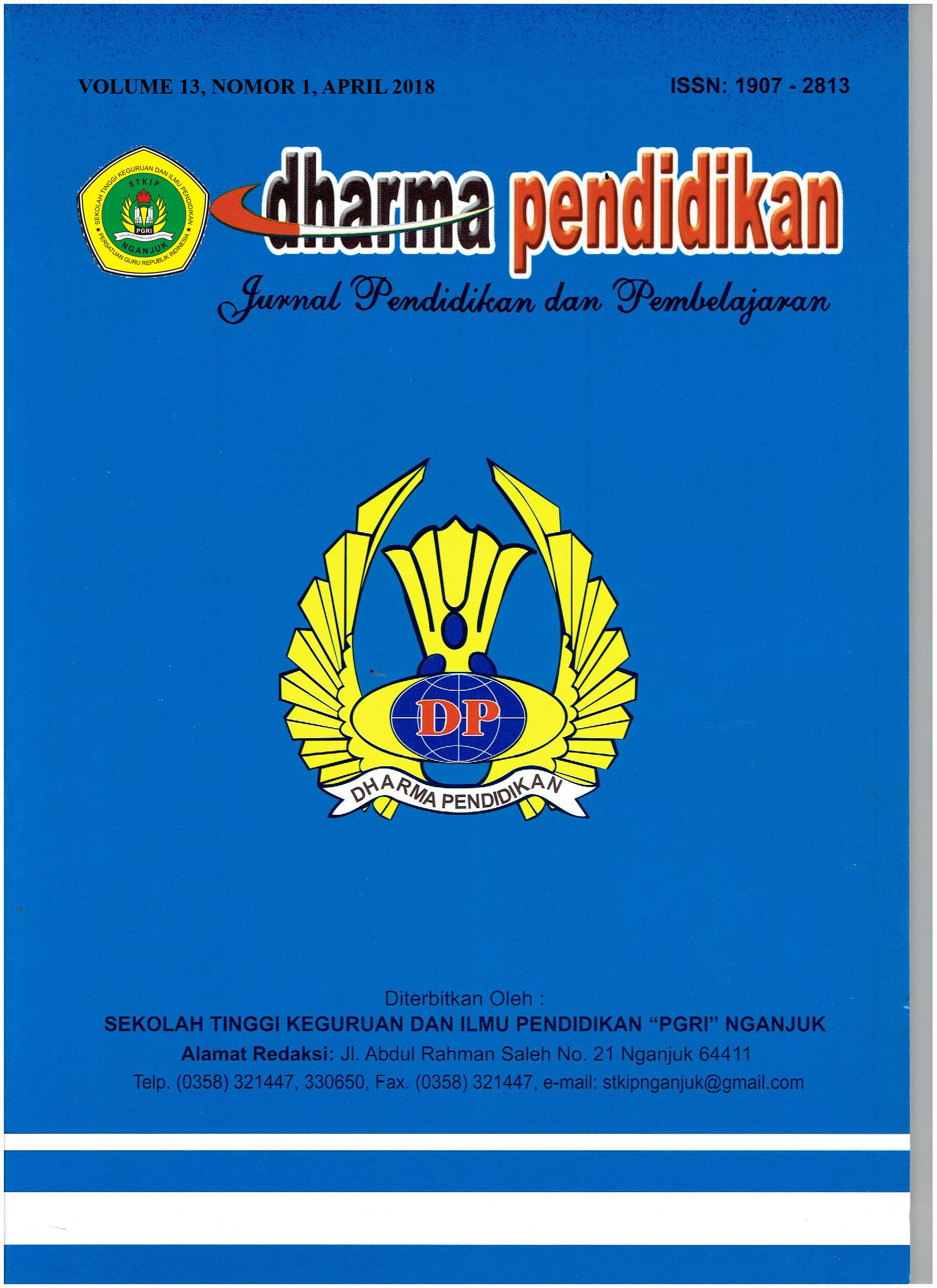On-Going Morphosyntax Supplementary Material
DOI:
https://doi.org/10.69866/dp.v13i1.48Keywords:
Morphosyntax, Supplementary MaterialAbstract
Studying morphosyntax is important in the study of linguistics and the topic of morphosyntax is very often considered as difficult to learn. However, several problems still occur in almost every linguistics class including problems from the students’ characteristics, learning materials, teaching strategies, etc. Therefore, the researchers conducted a preliminary study in a linguistic class. Based on the preliminary study, it was discovered that most of the students involved in the study lacked motivation to study linguistic especially in studying morphosyntax and lacked sources to study morphosyntax. The lecturer also had some difficulties in providing morphosyntax material which could motivate the students to learn morphosyntax with ease and which was suitable for the curriculum standards well as the students’ need.
Because of those problems, this research aimed to develop supplementary morphosyntax materials for university students which could help them to cope with their problems in studying morphosyntax through providing the easy-to-understand supplementary material which accommodated the students’ needs. It is expected that this research can inspire the lecturers who teach linguistics to become more creative and innovative in providing materials which match the students’ need and syllabus. However, this supplementary material is only one of the alternatives that can be used to assist the learning process. Thus, it can also be combined with other resources.
To achieve the aim of this study, the researcher used research and development design by following Borg and Gall model. The researcher did the preliminary study, designed the problem solving and developed the supplementary material since at the end of November 2016. The researcher also conducted expert validations for the product, revised the product draft, applied the product, revised the product again, conducted the second product implementation, had another product validation, and finally had the final product in the form of morphosyntax module.
Downloads
References
Bogdan, R.C and Biklen, S.K. 2007. Qualitative Research for Education: An Introduction to Theories and Methods.-Fitfth Edition. Pearson: New York
Borg, W.R. and Gall, M.D 1983.Educational Research : An Introduction (4th Edition) New York: Longman
Branch, R.M. 2009. Instructional Design: the ADDIE approach. Department of Educational Psychology and Instructional Technology University of Georgia; New York
Brown, H. D. 2007. Teaching by Principles : An Integrative Approach to Language Pedagogy 3rd Ed. San Fransisco : Addison Wesley Longman, Inc.
Chomsky, N. 1986a. Knowledge of Language: Its Nature, Origin and Use. New York: Praeger.
Dick, W and Lou C. 1978. The Systematic Design of Instruction-Designing and Conducting Formative Evaluation. England: Scott, Foresman and Company
Farrell, T & Jacobs, G. 2010. Essentials for Successful English Language Teaching. Continuum: New York
Hodges, A and friends. 2004. A Corpus Study on the Item-based Nature of Early Grammar Acquisition. Colorado Research in Linguistics. Volume 7, Issue 1
Koteyko, N. 2006. Corpus Linguistics and the Study of Meaning in Discourse. The Linguistics Journal. Volume 1, Number 2
Kusnadi, T. 2012. Developing an English Instructional Material for Bridging Course Program. [EEJ]; 2012(2):206-212
Latief, M A. 2013. Research Methods and Language Learning an Introduction. Stated University of Malang; Malang
Magno, C.2009. Developing Contemporary Teaching Perspective for ELT Lecturers. The Philippine ESL Journal. Volume 2
North, B and Jones, N. 2009. Relating Language Examinations to the Common European Framework of Reference for Languages: Learning, Teaching, Assessment (CEFR)- Further Material On Maintaining Standards Across Languages, Contexts And Administrations - By Exploiting Teacher Judgment And IRT Scaling. Retrieved from www.coe.int/lang at December 26th, 2014
Nunn, R.2006.The Pragmatics of Cooperation and Relevance for Teaching and Learning. Linguistics Journal. Volume 1.
Ojha, S. S. 2012. Students’ Perception of Supplementary Reading Material on Selected Dimensions. Retrieved from http://www.aiaer.net/ejournal/vol24212/p3.pdf on December 2nd, 2014
Radford, A. 2004. English Syntax: An Introduction. Cambridge. Cambridge University Press
Robinson, F.P.1970. SQ3R: effective study (4th ed,).University of Manitoba. Retrived from www.umanitoba.ca/student/academicclearning
Rosiana, C. 2015. Developing Supplementary Reading Material to Stimulate the Studnets’ Critical Thinking for The Second grade of Junior High School. Language-Edu. Volume 4, Number 7
Rosiana, C. 2016. Developing Supplementary Writing Material to Improves Academic Writing for University Students. Dharma Pendidikan. Vol .01, Issue 01
Stebbins, J. R. 2007. The Evolution of Evolutionary Linguistics. Colorado Research in Linguistics. Volume 20, Issue 1
Tomlinson, B. 2012. Materials Development for Language Learning and Teaching. Cambridge University Press: Cambridge
Vandenhoeck, T. 2013. Screen Reading Habits among University Students. International Journal of Education and Development using Information communication and technology(IJEDICT), 9(2):37-47.
Wang, H. and Cheng L. 2009. Factors Affecting Lecturers’ Curriculum Implementation. The Linguistics Journal. Volume 4, Number 2
Downloads
Published
How to Cite
Issue
Section
License
Copyright (c) 2021 Caltira Rosiana

This work is licensed under a Creative Commons Attribution-ShareAlike 4.0 International License.
1. Hak cipta atas artikel apa pun dipegang oleh penulisnya.
2. Penulis memberikan jurnal, hak publikasi pertama dengan karya yang dilisensikan secara bersamaan di bawah Lisensi Atribusi Creative Commons yang memungkinkan orang lain untuk membagikan karya dengan pengakuan atas kepenulisan dan publikasi awal karya tersebut dalam jurnal ini.
3. Penulis dapat membuat pengaturan kontrak tambahan yang terpisah untuk distribusi non-eksklusif dari versi jurnal yang diterbitkan dari karya tersebut (misalnya, mempostingnya ke repositori institusional atau menerbitkannya dalam sebuah buku), dengan pengakuan dari publikasi awalnya di jurnal ini.
4. Penulis diizinkan dan didorong untuk memposting karya mereka secara online (misalnya, di repositori institusional atau di situs web mereka) sebelum dan selama proses pengiriman, karena hal itu dapat mengarah pada pertukaran yang produktif, serta kutipan yang lebih awal dan lebih besar dari karya yang diterbitkan.
5. Artikel dan materi terkait yang diterbitkan didistribusikan di bawah Lisensi Internasional Creative Commons Attribution-ShareAlike 4.0









.png)




